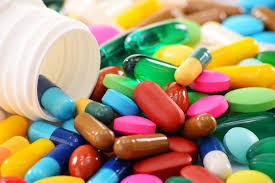
- +86-13363869198
- weimiaohb@126.com

Sep . 28, 2024 14:44 Back to list
curcumin bioavailability percentage
Curcumin, the bioactive compound derived from the spice turmeric, has gained attention for its numerous health benefits, including anti-inflammatory, antioxidant, and anticancer properties. However, one of the significant challenges associated with curcumin is its poor bioavailability, which refers to the proportion of ingested curcumin that enters the bloodstream and is available for use by the body. Research suggests that the bioavailability of curcumin is relatively low, often cited at around 1% or even less when consumed in its natural form.
The low bioavailability of curcumin can be attributed to several factors. Firstly, curcumin has low water solubility, which means that it does not dissolve well in the digestive tract. This inability to dissolve inhibits its absorption through the intestinal wall into the bloodstream. Moreover, curcumin is rapidly metabolized and conjugated in the liver and intestines, leading to its swift removal from circulation. Additionally, the presence of food, especially fats, can influence the absorption of curcumin, but typically, even with dietary fats, the bioavailability remains limited.
To enhance curcumin's bioavailability, various strategies have been developed. One effective method is the use of piperine, a compound found in black pepper. Piperine has been shown to increase the absorption of curcumin by inhibiting the metabolic enzymes that break it down, allowing more curcumin to enter the bloodstream. Studies have indicated that the combination of curcumin and piperine can increase the bioavailability of curcumin by up to 2000%.
curcumin bioavailability percentage

Another approach involves the use of lipid-based formulations. By encapsulating curcumin in liposomes or using it in conjunction with oils, researchers have found that these methods can significantly improve absorption. Curcumin can also be formulated into nanoparticles or combined with cyclodextrins, substances that can enhance its solubility and stability.
Moreover, recent advancements in technology have facilitated the development of curcumin formulations designed for improved bioavailability, such as curcumin phospholipid complexes and nano-emulsions
. These formulations aim to bypass the limitations of traditional curcumin supplementation, ultimately making the beneficial properties of curcumin more accessible.In conclusion, while curcumin possesses remarkable health benefits, its low bioavailability poses a significant barrier to its effective use. However, with ongoing research and innovative strategies like the inclusion of piperine and advanced delivery systems, it is possible to improve the absorption of curcumin. As the scientific community continues to explore and develop these methods, the potential for curcumin to positively impact health becomes increasingly promising.
-
Top CAS: 79099-07-3 Factories & Wholesale Supplier from China
NewsJul.30,2025
-
High-Quality GS-441524 for White Liquid Type Factories & Suppliers
NewsJul.29,2025
-
High-Quality Pharmaceutical Intermediates for Sale – Reliable Supply
NewsJul.29,2025
-
High-Quality Pharmaceutical Intermediates for Sale - Reliable Solutions
NewsJul.29,2025
-
High-Quality Pharmaceutical Intermediates Supplier for Global Market
NewsJul.28,2025
-
GS-441524 for White Liquid Type Factories – High Purity & Reliable Supply
NewsJul.28,2025